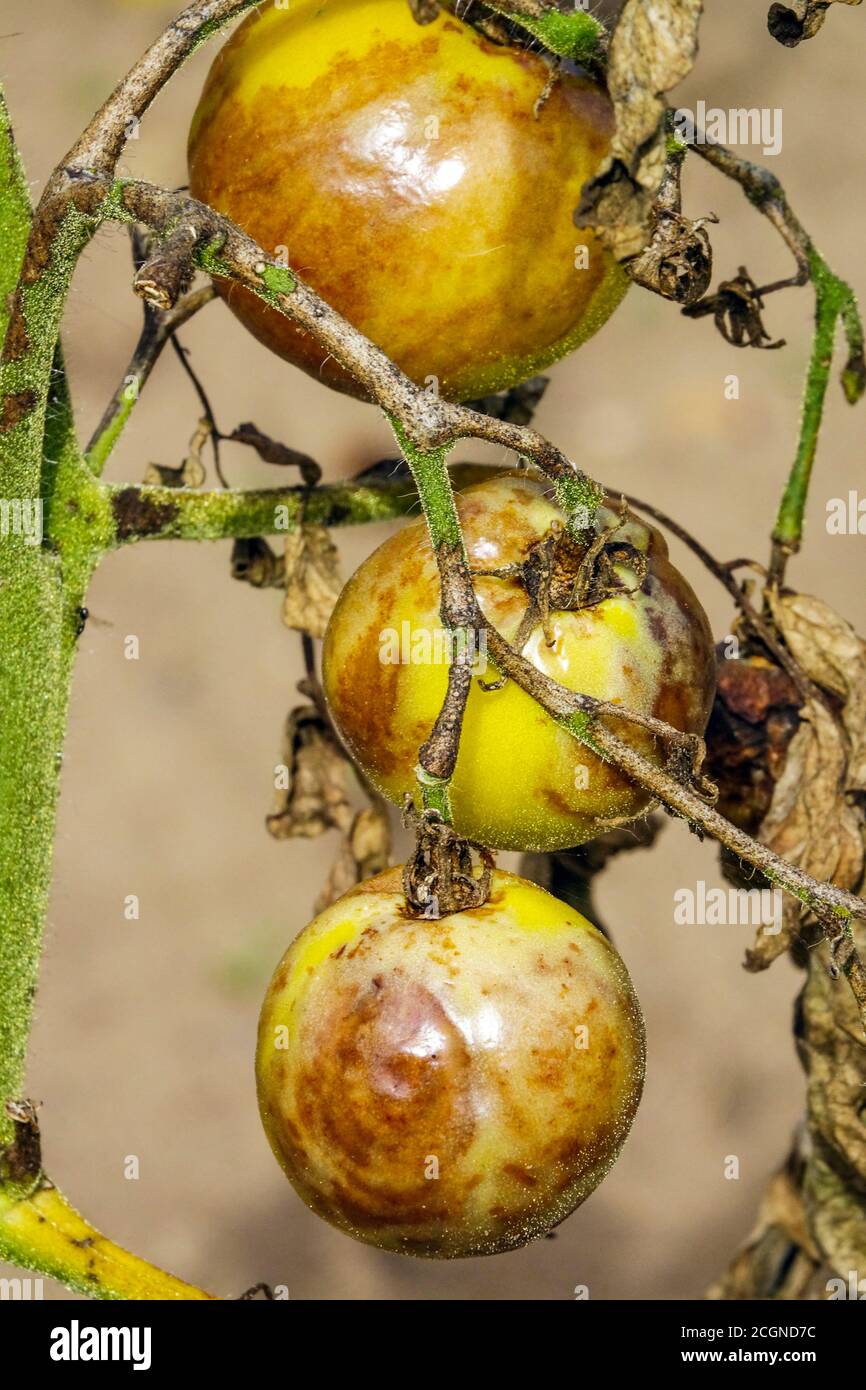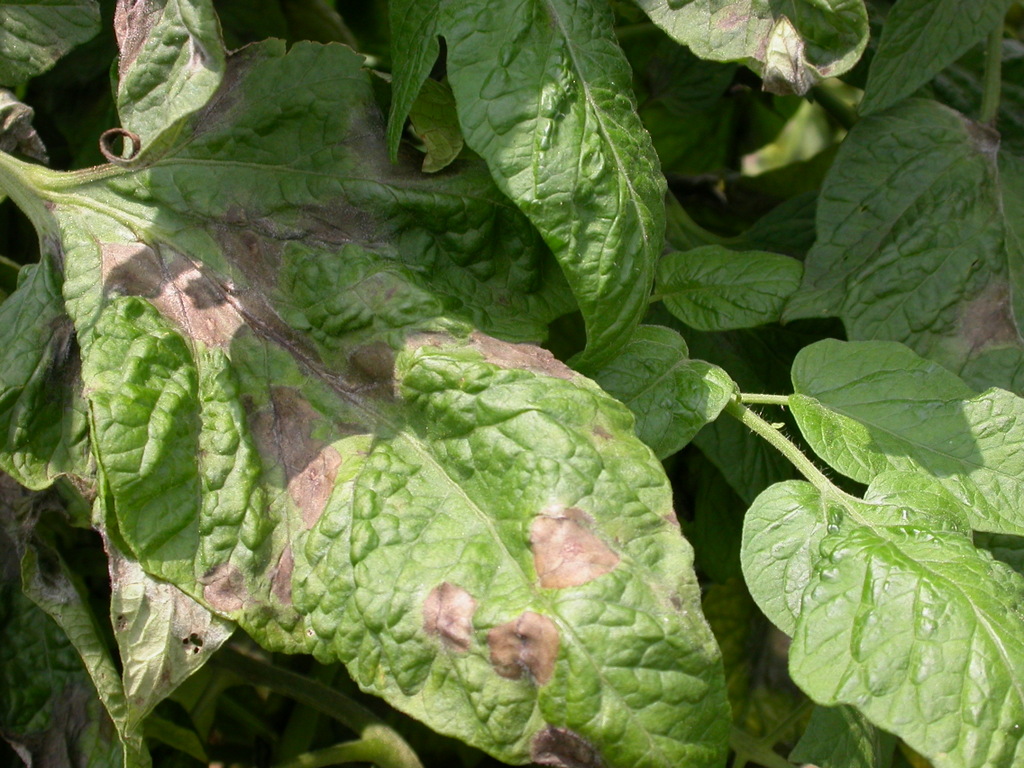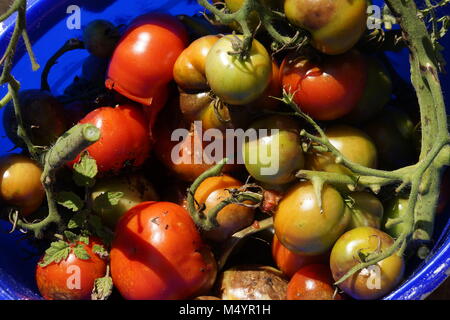
Anything that girdles or cuts off water and nutrients to the top of a plant results in wilting, leaf chlorosis (yellowing), leaf necrosis (browning), and premature leaf fall and plant death. Many different problems can result in the same aboveground symptoms as Phytophthora root rots. Aboveground symptoms are useful but not completely diagnostic. It is necessary to thoroughly examine above- and belowground parts of the plant. Knowledge of the plant’s susceptibility is also helpful (see the table Plants Susceptible to Phytophthora Diseases). Some of the best evidence indicating a Phytophthora disease are symptoms shown by the plant itself. The plants originally grouped near the drain now may be scattered through a different bed.

By that time containers in the bed may have been moved to a different location, masking the original pattern. Flooded plants may not show symptoms for several months.

Some container nurseries may have sloped, well-drained beds, but drains can clog, back up, and leave plants sitting in several inches of water. Leaks, large-volume nozzle sprinkler heads, main line blowouts, or even an oversized drip emitter can result in too much water and problems with Phytophthora. Other patterns can include dying plants around irrigation lines and equipment. Watering hoses that are left on the ground or stuck down drainpipes also can pick up and spread propagules of Phytophthora. Leaks from the roof or a cooling system or internal condensation that drips in the same bench location can start Phytophthora problems. Unusual situations also can occur in the greenhouse. Regular maintenance can help prevent a flooding condition. Nearby trees such as poplar or willow can fill and clog tiles with their roots. Tiles generally empty out in a nearby ditch, but if not inspected regularly can become clogged with debris. Many growers tile poorly drained fields to quickly move away excess water. With age, sloped gravel beds can settle, forming pockets that collect water or do not rapidly drain. Plastic-covered ground is notorious for producing puddles under container-grown plants, allowing Phytophthora to increase rapidly. Container nurseries have used various means to collect and recycle excess water. Puddled water or poor drainage can be in areas where growers think they have taken corrective measures. Diseased trees can be found in sites where water flows, either in naturally occurring ravines and ditches or along drainage from logging roads. A few exceptions include Phytophthora root rot problems on noble fir in Christmas tree plantations or Port Orford cedar forest trees. Hill crests or steeply sloped areas are unlikely places to find Phytophthora diseases. Zoospores are attracted to the roots and begin the infection process.ĭiseased plants generally are in the lower areas of a field, where excess rain or irrigation water accumulates. During such events, this organism can produce swimming spores (zoospores). Excess water or poor drainage allows roots to become flooded for extended periods. Phytophthora diseases can be found on cranberries growing in low bogs near the coast or in the mountains on trees growing several thousand feet above sea level. Anywhere significant quantities of water collect, accumulate, or flow, Phytophthora spp. Flooded or saturated soils are not favorable to plant growth and can predispose plants to infection. They thrive, grow, reproduce, and infect plant roots in water, saturated soil, and along river banks and ponds. Phytophthora organisms are commonly referred to as water molds.

These factors can be observed in flat open areas, undulating fields, sloped nursery container yards, or even in the greenhouse. The two main factors to look for when diagnosing Phytophthora-caused plant problems are the pattern of diseased plants and water drainage. 2, 3 Plant samples can also be taken to a laboratory for traditional or “high tech” tests to confirm the presence of this fungus-like organism. Knowing the biology of the Phytophthora organism and conditions that favor its development also helps the diagnosis. The evidence is in the field characteristics, field history, and symptoms of the affected plants. Time spent collecting all the information for an accurate diagnosis will aid management efforts in the long run.Ĭertain lines of evidence can quickly lead you toward (or away from) a Phytophthora disease diagnosis. 10 A wide variety of cultural and chemical controls can be implemented for Phytophthora problems.

Although Phytophthora is a recognized disease problem in the Pacific Northwest, it has been misdiagnosed in the field half the time in Oregon. The first step in managing any of the several diseases caused by Phytophthora spp. Pscheidt, Extension Plant Pathology Specialist, OSU


 0 kommentar(er)
0 kommentar(er)
